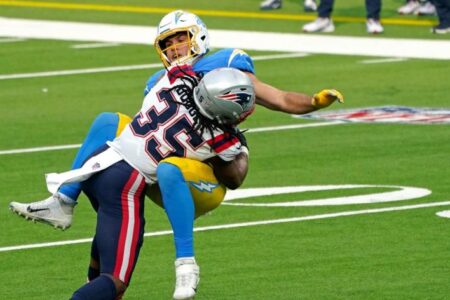Urgent
In the Starting Line-Up
- Joined
- Mar 1, 2005
- Messages
- 3,109
- Reaction score
- 1,942
Although there are a number of changes under the Uncapped Year system, the Final Eight Plan probably has the greatest potential impact on the Patriots.
Here is the key text of the Plan:
We have heard about some of the provisions, such as only signing as many free agents as you lose. However, there is an important distinction between Final Eight and Final Four:
Final Eight teams can only sign free agents as they lose players, one for one, at salaries at or below the salaries signed by the players that departed
Final Four teams (AFC & NFC Championship) can only sign their own players or players released by other teams in addition to the replacements - Teams 5-8 have this "mid-level exception"
Complex - it seems that an AFC Championship team can then:
Designate one Franchise and one Transition player
Keep all five-year players as restricted free agents
Sign their own free agents
Sign other free agents released by their previous club
Sign other unrestricted free agents only as their own players are signed, at salaries at or below the departing players
Here is the key text of the Plan:
ARTICLE XXI
FINAL EIGHT PLAN
Section 1. Application: The provisions of this Article shall apply only in any League Year during the term of this Agreement in which no Salary Cap is in effect.
Section 2. Top Four Teams: Each of the four Clubs that participated in the NFC and AFC Championship games the Prior League Year shall not be permitted to negotiate and sign any Unrestricted Free Agent to a Player Contract, except: (a) any Unrestricted Free Agent who acquired that status as a result of the NFL waiver system; (b) any Unrestricted Free Agent who was under contract to such Club on the last date of the
last League Year of the player's most recent Player Contract; and (c) any Unrestricted Free Agent signed pursuant to Section 4 below.
Section 3. Next Four Teams: Each of the four playoff Clubs that lost in the immediately preceding playoff games to the four Clubs that participated in the NFC and AFC Championship games the Prior League Year shall not be permitted to negotiate and sign any Unrestricted Free Agent to a Player contract, except: (a) any Unrestricted Free Agent who acquired that status as a result of the NFL waiver system; (b) any
Unrestricted Free Agent who was under contract to such Club on the last date of the last League Year of the player's most recent Player contract; (c) any Unrestricted Free Agent signed pursuant to Section 4 below; and (d) any Unrestricted Free Agent as follows:
(i) One such player for a Player Contract that has a first year Salary of $4,925,000 or more; and
(ii) Any number of such players for a Player Contract that has a first year Salary of no more than $3,275,000 and an annual increase in any future contract years of no more than 30% of the first contract year Salary, not including any amount attributed to any signing bonus. In addition, each such Club and each such player entering into a Player Contract pursuant to this Subsection may not renegotiate to increase the amount of Salary to be paid during the term of the Player Contract for a period of one year after the signing date of such contract.
Section 4. Replacement of Free Agents Signed by Other Club: Each of the eight Clubs subject to the provisions of this Article shall be permitted to negotiate and sign one Unrestricted Free Agent to a Player Contract ("New Player") for each Unrestricted Free Agent who was under contract to such Club on the last date of the prior League Year, who has signed with another Club ("Previous Player"), so long as the Player Contract for the New Player shall have a first year Salary of no more than the first year Salary of the Player Contract signed by the Previous Player with the New Club, and an annual increase in any future contract years of no more than 30% of the first contract year Salary, excluding any amounts attributable to any signing bonus. In addition, each such Club and each such player entering into a Player Contract pursuant to
this Subsection may not renegotiate to increase the amount of Salary to be paid during the term of the Player Contract for a period of one year after the signing date of such contract.
We have heard about some of the provisions, such as only signing as many free agents as you lose. However, there is an important distinction between Final Eight and Final Four:
Final Eight teams can only sign free agents as they lose players, one for one, at salaries at or below the salaries signed by the players that departed
Final Four teams (AFC & NFC Championship) can only sign their own players or players released by other teams in addition to the replacements - Teams 5-8 have this "mid-level exception"
Complex - it seems that an AFC Championship team can then:
Designate one Franchise and one Transition player
Keep all five-year players as restricted free agents
Sign their own free agents
Sign other free agents released by their previous club
Sign other unrestricted free agents only as their own players are signed, at salaries at or below the departing players
Last edited:


















